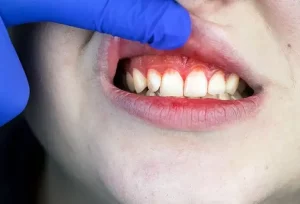
There is no other daily routine as simple yet effective but performed poorly as toothbrushing. Very few of us are actually doing it properly. Also, the mainstream myths and common bad habits about toothbrushing are not helping this phenomenon. Still, it is our responsibility to reach the plain facts and fulfill this minor task that has a major impact on our long-lasting oral health. So, how to brush your teeth properly? Let’s have a fact check quick and get to the details.
Common myths that actually do not work
Let’s break the myths first:
- Brushing once a day is not OK! You need to brush at least twice a day, each session lasting 2 minutes minimum.
- No, you cannot use solely mouthwash as a substitute for brushing.
- Yes, you do need to floss. It is an extremely important complementary to brushing and is of significant importance in preventing tooth decay.
- Brushing hard does not mean better cleaning. Be gentle, you might hurt your gums instead. Choose a brush that has soft or medium bristles.
Also, there are other measures to take into consideration when it comes to how to brush your teeth properly. We tend to get lazy with changing our toothbrushes. However, it needs to be changed every 3-4 months, otherwise, you will not able to have the squeaky clean feel. The weary or bushy texture will not be hard enough to provide that level of cleaning.
Your diet choices and how seriously you follow your regular dentist visits are also other factors to care about.
SO, HOW TO BRUSH YOUR TEETH PROPERLY?
Whether you are a child or a senior, the first step to full oral care is proper toothbrushing. So, how to brush your teeth properly? Here is a step-by-step guide:
1- Moisturize your brush, and put toothpaste on it. Be careful – a big amount does not necessarily mean better cleaning. Only the size of a pea is more than enough.
2- Place the toothbrush at a 45-degree angle to your gums. Start brushing in circular movements. Keep gentle, and repeat this for your front sides of your teeth.
3- Brush the outer surfaces, inner surfaces, and do not forget the chewing surfaces.
4- For the insides, it is more about back and forths. For the insides of your top front teeth, flip your brush and slide it. Make another flip for the bottom insides.
5- And finally, gently brush your tongue too. This simple act creates difference in keeping your mouth healthy.
6- Once you are done, it is time for the floss. For spots that toothbrush cannot reach, flossing completes the routine perfectly. After flossing, rinse so you can get rid of the leftover plaque and bacteria.
For electric toothbrush users, the same steps apply, only with a slight difference. Just finish one tooth at a time, starting from the back bottom row of your teeth, and carry on with the top row once you are finished with the all row. Do not apply much pressure on the device, the powerful rotating mechanism takes care of it all.
AND HOW TO CHECK WHETHER YOU HAVE DONE IT RIGHT
You can always check the surface of your teeth with your tongue. If you have done the dental cleaning correctly, you will feel a completely smooth surface from the gum line to the edge of your tooth. For the upper set of teeth, it is easy to reach that level of cleanliness. But make sure to check the harder-to-reach surfaces like the back of your lower tooth set. This way you can find the areas that need a more thorough cleaning.
Do this check with the floss as well. You will notice lesser plaque will come out if you have done your job well.
And of course, checking your teeth in the mirror is a technique that will not get old. It is not enough, however, you will notice the visible plaque in case it is left. Why is getting rid of the bacteria and plaque important? If these build up on your gums, teeth, and even your tongue, it can lead to decaying and gum disease.
OTHER USEFUL INFO FOR VARIOUS CASES
“HOW TO BRUSH YOUR TEETH” TIPS TO TEACH CHILDREN
Are you a parent who want to teach kids how to brush your teeth properly? We have tips for you too.
It is very important to start teaching your children about oral habits after their first baby teeth come out. This usually happens when they are around 6 months old. Smearing the brush with a tiny bit of toothpaste and gently brushing these teeth is advised. Make sure that both the brush and paste are suitable for kids.
As they grow, make sure to supervise them as they carry out their daily oral routines. They will tend to skip it, or keep the brushing short, so supervising them until they turn it into a habit is a must do as a parent.
DO YOU HAVE BRACERS TO ALSO TAKE CARE OF?
Do not worry, it requires a few extra steps only.
1- Remove rubber bands or any removable parts of your braces.
2- Clean all around your braces, as well as under the wires. Do not miss the wires themselves either, since they can be places for bacteria to build up on as well.
3- Do the brushing as described in the general description above.
4- Rinse the brace parts and re-apply them.
Are you at the spacers stage of your brace treatment? You can still brush as you normally would. Mind one important thing though. You should stick with the back and forth movements instead of up and down strokes. Otherwise, you can risk having the spacers misplaced.
HOW TO BRUSH YOUR TEETH PROPERLY? FINAL NOTES TO REMEMBER
In the end, there is something to remember: Brushing your teeth properly is not only about oral health but also good health in general. Also, if you feel your home care is still not enough, although you are following the above steps, we gladly offer further information.
You can communicate with our professionals for dental implants and more. Please contact us.
You can read our previous post on https://smileteamturkey.com/blog/dental-bridge-vs-implant/





